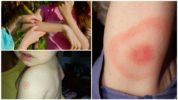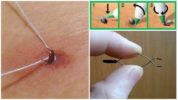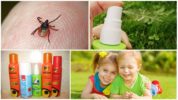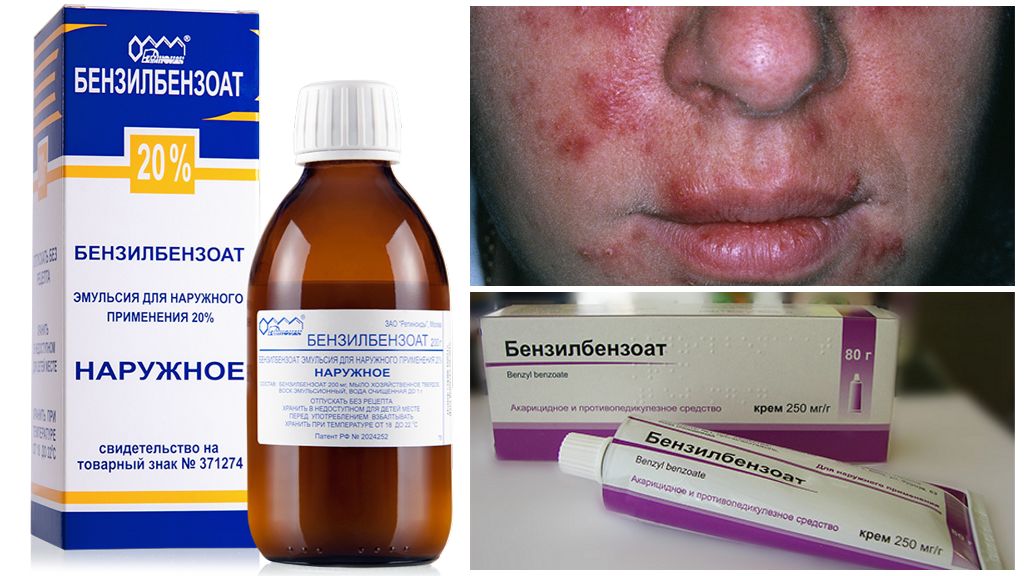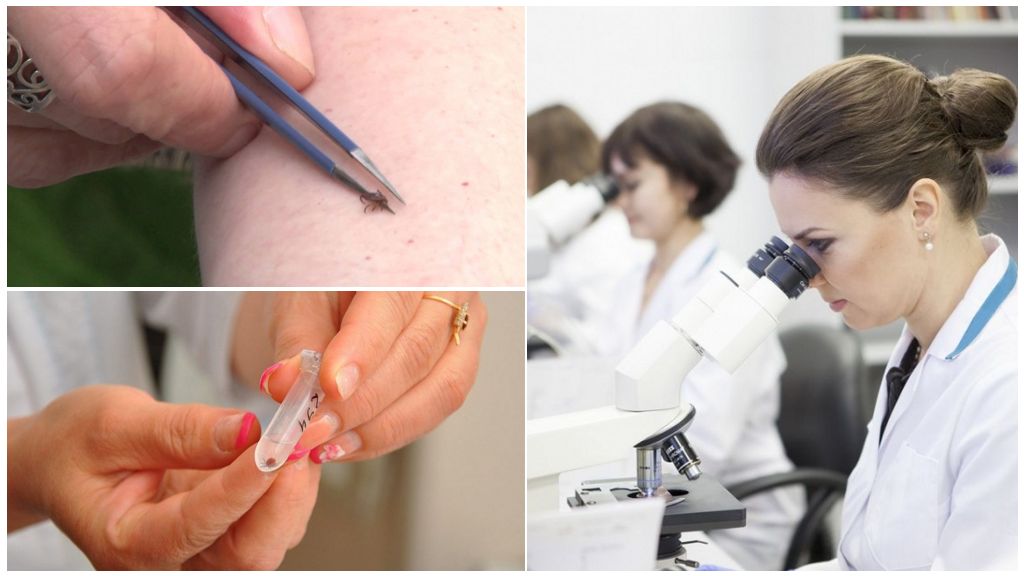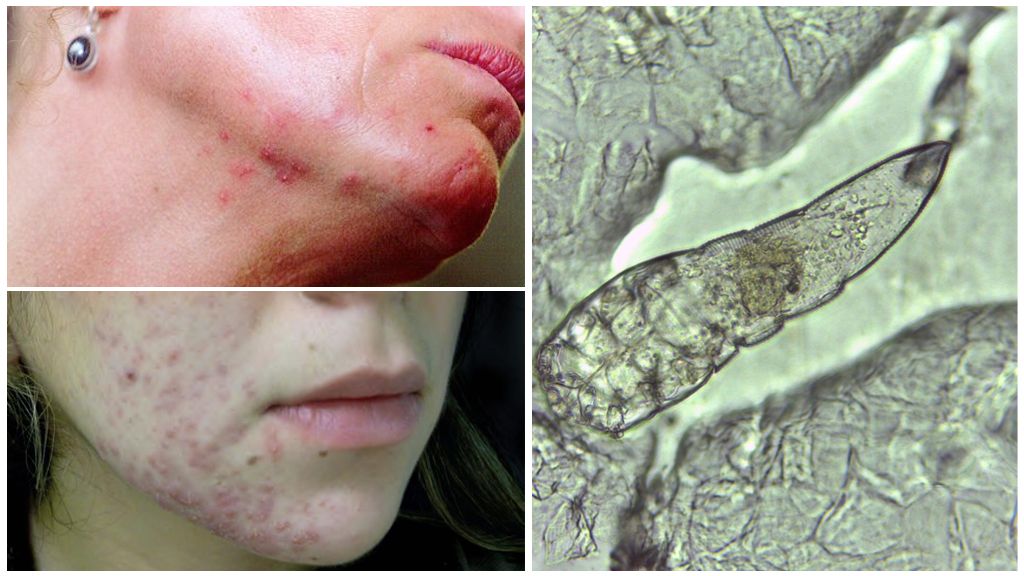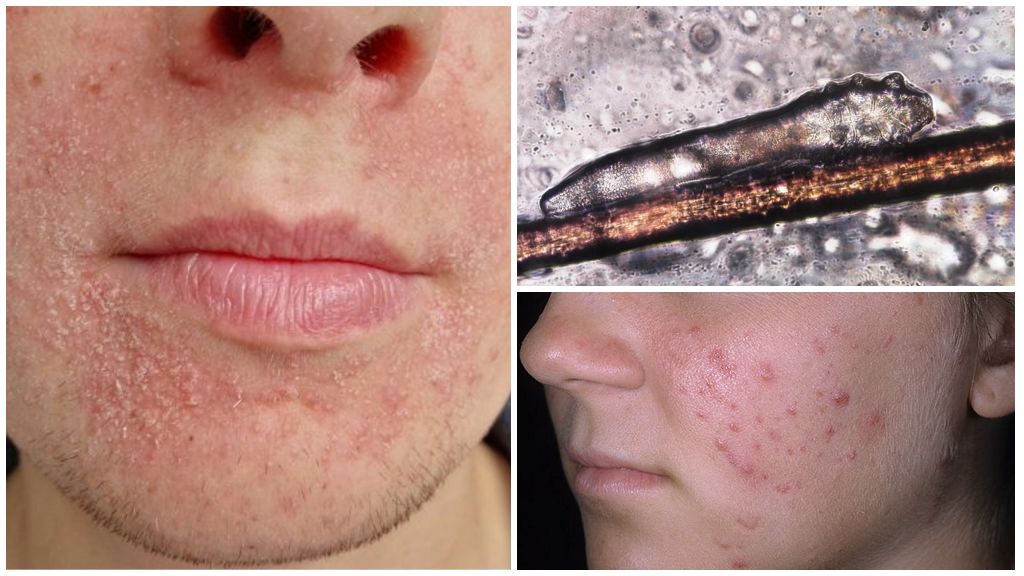- Tick bite in a child
- Tick extraction
- Tick repellents
Summer is a time of long-awaited vacations and vacations, fun entertainments and long walks in the fresh air. However, do not forget about the dangers that can lie in wait for any person in nature. Darken a pleasant pastime is capable of mite. A small parasite can cause very serious problems. Of particular danger is a parasite bite for young children. Having discovered that the child was bitten by a tick, many parents are lost and start to panic. What measures need to be taken immediately in such a situation and where to go, you need to know in order to avoid unpleasant consequences.
Bite symptoms
In the spring and summer, many nature lovers suffer from tick attacks. Moreover, children make up almost a third of this number of victims. And if earlier parasite activity usually manifested in May, due to changes in the climate that have been observed over the past ten years, pests pose a danger until the fall.
Important!
Most often, the tick attacks in areas with the most delicate skin: in the neck, under the shoulder blades, in the chest or in the inguinal folds. It is especially dangerous if a tick has bitten a child in the head or behind the ear. In this case, it is better to call an ambulance or go to a medical institution yourself, so that the specialist painlessly removes the parasite.
To determine that the pest attacked the baby is easy, if you know the symptoms of a tick bite in a child:
- The attack of the parasite is not accompanied by pain. Moreover, at the time of the penetration of the offender into the skin, only its rear part is visible, outwardly resembling a small mole.
- After some time saturated bloodsucker increases in size and lags behind the wound. As a result, the place where he stuck begins to swell, blush and itch a lot.
- The lymph nodes increase, the baby may look drowsy, weakened and moody. The child feels chills, as temperature after a tick bite usually rises.
- The manifestation of nausea, vomiting and shortness of breath is also possible.
Over time, the wound becomes covered with a crust. After 10-15 days, the inflammation subsides, but the affected baby needs timely assistance. After all, the consequences of a tick bite in a child can be quite serious.
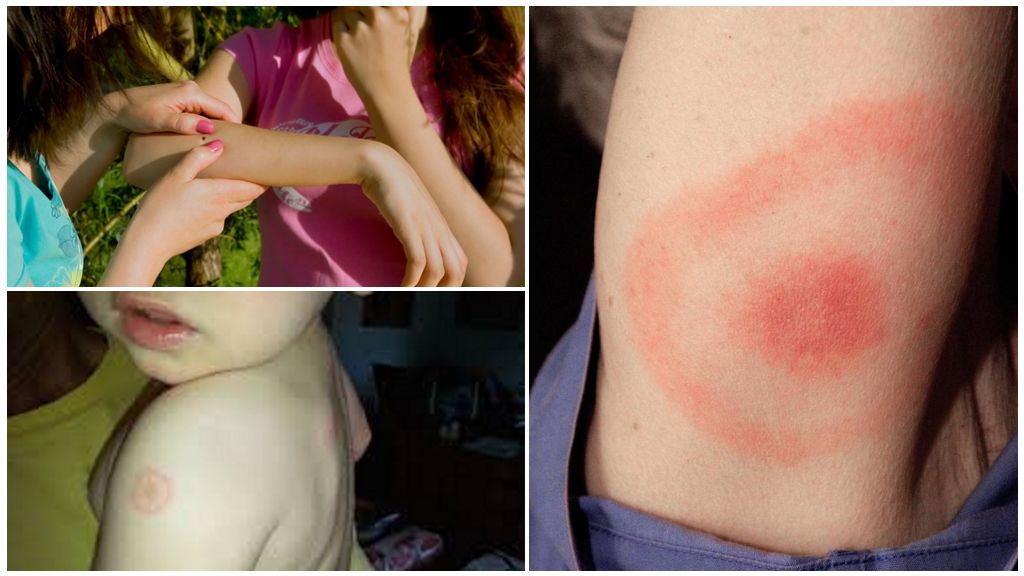
Diseases caused by a tick bite
The bite of a bloodsucker is dangerous because even a brief contact with an animal can cause infection with very dangerous diseases.
Meningoencephalitis
Meningoencephalitis or tick-borne encephalitis It is a viral disease that causes severe intoxication of the body, as a result of which the brain and spinal cord are affected. Often the virus is accompanied by neurological complications, even a fatal outcome is possible.
Tick-borne encephalitis can infect various animals and birds. Having eaten their blood, the parasite absorbs viral bacteria along with it, becoming a carrier of a dangerous disease.
Important!
Incubation period the development of the disease in young children is usually much shorter than in adults.With very weakened immunity, signs of encephalitis can appear 2 days after the bite. Symptoms of tick-borne encephalitis in children are manifested in the form of fever, headache and muscle pain, loss of appetite. This condition the baby can experience for two months from the moment of infection.
Lyme Disease
Lyme Disease or tick-borne borreliosis is another disease that the bloodsucker of his donor can reward. The causative agents of this infection are found in dogs, sheep, cows and birds, after which they are "shared" with a person.
If a tick infected with tick-borne borreliosis suddenly bites into the skin of a child, then in addition to fever, weakness, and severe headache, the baby may experience a rash on his body, which in medicine is called a migrating ring-shaped erythema.
Important!
The disease is successfully treated if a timely course of antibiotics is taken. In addition, after treatment, immunity becomes resistant to these bacteria. If treatment was ignored, the disease takes on a chronic form, as a result of which the cardiac and nervous system and joints are affected.
Having found signs of tick-borne encephalitis in children or tick borreliosis symptoms, urgently need to seek medical help.
What to do if a child is bitten by a tick
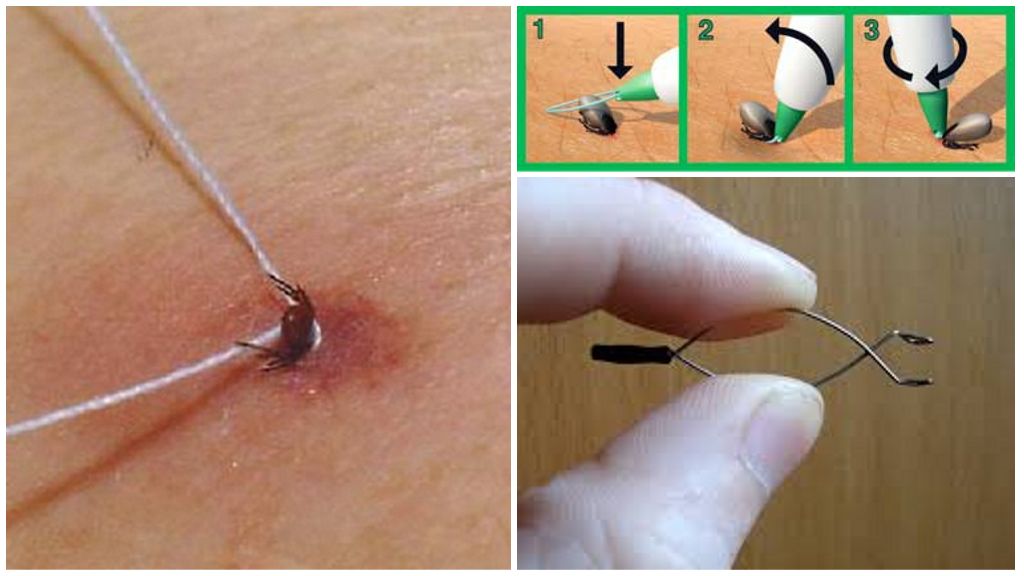
If the baby has the symptoms after a tick bite, described above, it is necessary to provide him with emergency assistance.
- To begin with, you should know how to pull out a tick in a child. In no case should you pull out the parasite, try to stretch it out with your nails or try to crush it, since such actions can entail a rupture of the bloodsucker, and the head and proboscis of the animal will still remain in the victim’s body. Therefore, an allergic reaction and inflammation can not be avoided anyway. You can’t touch the pest with your bare hands, as it can be contagious and able to infect not only a child, but also an adult providing him with emergency help. You can also not smear the place where the tick was stuck, with oil, glue or other substances. Obstruction of the respiratory tract will provoke aggression of the bloodsucker, which is why it will penetrate even deeper into the wound.
- To remove the tick at home, you should use a thread, a loop from which is thrown on the body of the offender, placing it as close to the surface of the skin of the baby. You need to get the pest smoothly swaying from side to side movements. You can also remove a bloodsucker with tweezers or forceps, capturing it as close to the proboscis as possible. The parasite can be quickly pulled out, having made several revolutions around the axis. Also available at pharmacy. special fixture Anti-tick or Trix Tick.
- If attempts to pull out a bloodsucker on their own were unsuccessful, it is necessary that professionals remove the tick. To do this, you should contact the nearest emergency room, clinic, a surgeon or an infectious disease specialist, an SES or an ambulance.
- The next step after removing the bloodsucker is bite disinfection antiseptic agent. To do this, use alcohol, iodine, brilliant green, cologne or tincture of calendula. You can also lubricate the wound with chlorhexidine or hydrogen peroxide.
- The removed parasite is placed in a hermetically sealed container, on the bottom of which cotton wool moistened with water is placed. After which the bloodsucker is delivered for research to an accredited laboratory, where they usually spend free tick tests. Moreover, a fragment of the parasite is sufficient for PCR diagnosis; a live tick is necessary for microscopic diagnosis.
- It is also necessary to examine the child in the infectious diseases hospital, donating blood for antibodies to the causative agents of borreliosis and tick-borne encephalitis not earlier than 10 days after the bite.
- If the situation with a tick bite occurred in an area with a high rate of encephalitis infection, then usually doctors, without waiting for the results laboratory blood testsprescribe to a child Iodantipyrine or Immunoglobulin, kids recommend Anaferon. Such drugs as Arbidol, Cycloferon or Remantadine, which are used from the first day after a bite, can also be prescribed.
Important!
In a situation when a baby is affected by a tick bite, the rules for emergency assistance are identical. However, it is better if it is provided by a healthcare provider. Clinical recommendations are effective for three days from the time of the bite.
Preventive actions
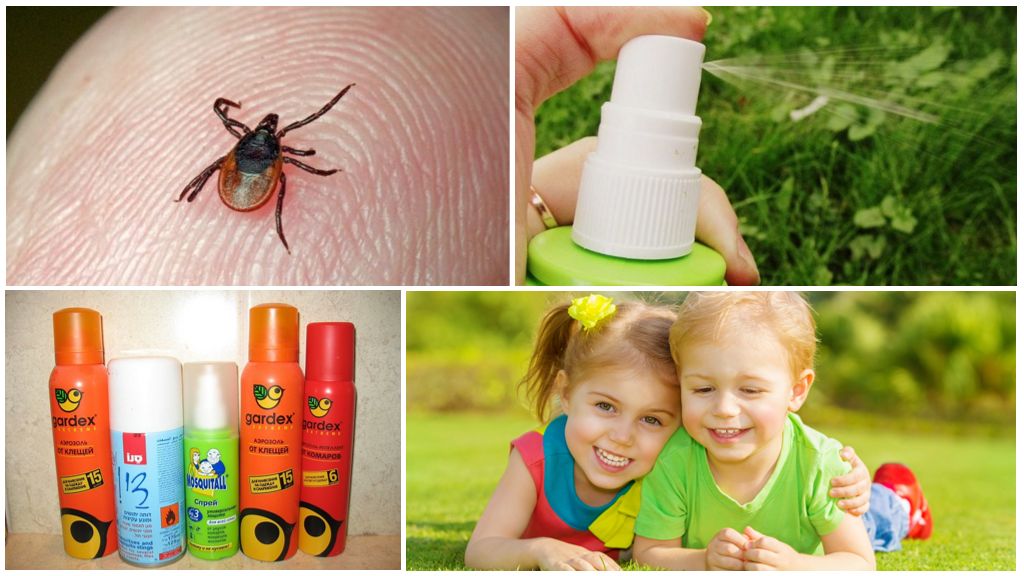
When planning walks or vacations in forest park areas, it is necessary to choose the right maximum closed clothing for the child, preventing the ticks from biting children's skin. Use also gives a good effect. repellent meansrepelling ticks, mosquitoes and other blood-sucking pests. It’s enough to treat the baby’s clothes like this protective baby compoundand pests will not cling.
Walking in the forest is better along the paths. Not the best option - to make a halt in tall grass, you should not allow children to play in such places. Dangerous flowers even at home can also be flowers or grass that were picked up in a clearing and brought into the house, which also often cause ticks. Upon arrival, carry out a thorough examination of things and body. Noticing that a tick crawled over the child’s body, it should be immediately caught: throw in boiling water or burn. Then it is necessary to carefully examine the skin for a puncture or black dot, and if there is one, provide the baby with emergency assistance.
Important!
Tick-borne encephalitis prevention children is to vaccinate the baby. After all, preventing a disease is much easier than treating it. Especially this measure is necessary in places with high rates of encephalitis infection. Usually, vaccination involves the introduction after a certain period of time of three injections, and the baby's immunity is formed after the second vaccination. Vaccination should begin before the onset of parasite activity. And if it suddenly happens that a tick bit a vaccinated child, then the baby will not become infected.
Contraindicated tick-borne encephalitis vaccines children under 1 year old. Protein-based immunoglobulin preparations that can cause serious allergies are also undesirable for infants. Therefore, it is better to take precautions and not take a defenseless baby into the forest, because it is very unsafe.
